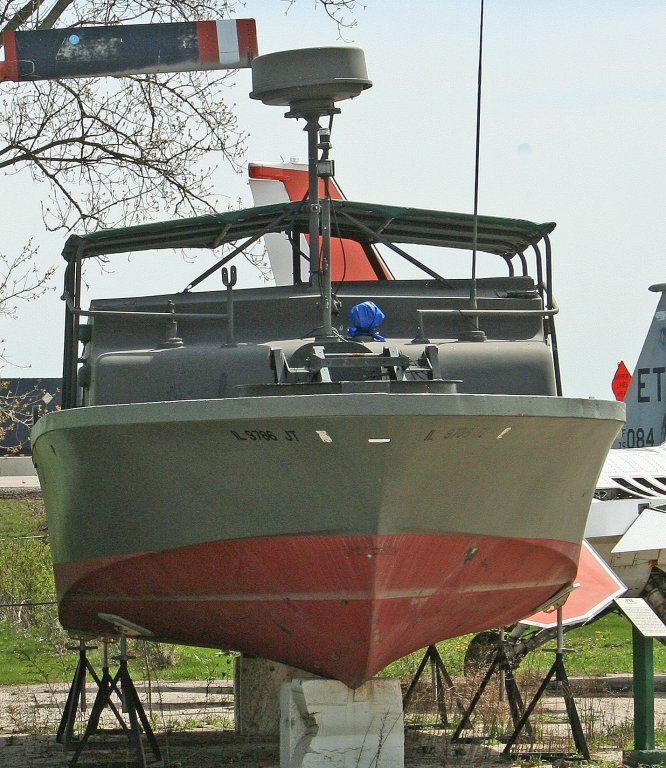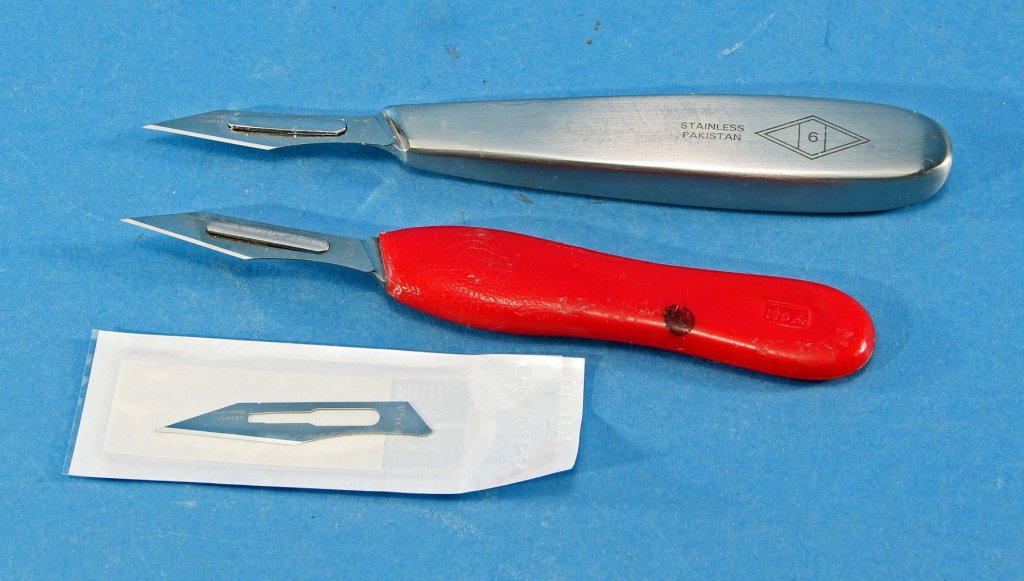-
Posts
3,035 -
Joined
-
Last visited
Content Type
Profiles
Forums
Gallery
Events
Everything posted by kurtvd19
-
As long as you apply the heat gently and don't overheat the wood to the point where the lignin boils, everything should cool off OK and the strength will not be affected. As others have cautioned - Be Careful. These things can start fires - I saw many fires started using these things for removing paint by pros and homeowners before I retired from the FD. Kurt
-
As long as you make sure there isn't a burr on the cut end it should work perfectly. I had the opposite problem with another brand of micro chuck - the shaft was too short to go into my dental drill hand piece so I ah do de-solder the one that came in the chuck and replace it with one a bit longer - no problem as it is a std size. Kurt
-

Air Brush Paints
kurtvd19 replied to Worldway's topic in Painting, finishing and weathering products and techniques
I don't brush paint except on very rare occasions and didn't try them with a brush, but I would not personally use them with a brush due to the rather coarse pigment that in my opinion would produce a rather coarse and heavy coat of paint. Thinning doesn't affect the pigment size of the paint so the coverage would look coarse (in my opinion). I did dab some onto some scrap wood in the shop and decided they were not worth spending time on. The old Floquil (solvent based) and the current Badger Modelflex Acrylic paints have a pigment that is very finely ground to about 1 micron. Other hobby paints are probably close but I have personal knowledge of the Floquil and Badger paints. Typical house paint has a pigment size of 17-19 microns - they all advertise "covers in one coat!". I find the MS paint unacceptable but that doesn't mean that other won't say they are the best thing since sliced bread. Kurt -

Air Brush Paints
kurtvd19 replied to Worldway's topic in Painting, finishing and weathering products and techniques
Derek: Stick with the airbrush paints. Hobby paints have a much finer pigment size than other paints. They are designed to not hide detail under a thick coat of heavy (large pigment) paint. The larger/coarser pigment paints hide detail. I do not recommend the MS paints - the pigment size is not comparable at all to an airbrushing paint. I had some donated to our club and I could not in good conscious pass it on to anybody who was contemplating airbrushing - it looked to me to be the same consistency as house paint. On the off chance that the stuff I examined was atypical when some time later a couple of jars were offered at another club's meeting I took a jar to check it out and my opinion did not change. I have over a dozen air brushes with small to large needles/tips and I wouldn't even try to use any of this stuff through any of my brushes. In fairness to Model Expo this is the only Model Shipway's labeled product I don't fully recommend. Do a search here on airbrushing - there are some very detailed posts by experienced users on using the right paints. Kurt -
Welcome to MSW Steve. Gerald Wingrove, a true master in metal is building a metal hull and I am sure his build will be of interest to you. His work is exceptional and highly detailed. A bit different than I think you are considering, but your time will not be wasted in checking his work out. Again, welcome to MSW. Kurt
-

Thinning water based paint
kurtvd19 replied to grsjax's topic in Painting, finishing and weathering products and techniques
Ron is right about alcohol. One issue with Acrylics is drying too fast - alcohol only intensifies the effect. Badger recommends using only distilled water for thinning their Acrylic paints which I use exclusively. I have never had to thin the Badger paints unless I left a jar open as they are of the proper consistency for airbrushing as supplied. Kurt -
Mark: The photo shows on the right a 0.045" dia. crimp on 1 x 7 SS wire 0.012" dia. For 1/12 this would be a smaller line, but it's next to impossible to see that it is a crimp and for larger sizes be sure to use the special crimp pliers and you can get the crimp to be smooth except for the seam where the crimp is touching itself and it then appears as a line that is very hard to see any curvature of the piece. The bit to the left was an illustration to show what not to do. Kurt
-

Is Warner Woods West still in business ??
kurtvd19 replied to Teakfreak's topic in Masting, rigging and sails
Yes, Lloyd retired and dropped his ad in the NRG's Journal last year (Lloyd was a long time NRG Director). Kurt -
Roger: Yes, it's the Russell Military Museum accessed from Russel Rd. I always called it the military junkyard until I found out it was a "museum" of sorts. There are some real gems in the collections, some of which are enclosed, while others are just out in the weather. The one PBR is operational and is occasionally operated on the IL Chain of Lakes - thus the IL registration number on the bow shown in the first photo. A neat place to visit - in good weather as it gets muddy if it has rained recently - only $10 admission. Kurt
-
The list can be found here - just click on it and you can see the official up-to-date listing of the prohibited manufacturers. Kurt
-
Blacken-It is no longer produced. It was a small mom and pop place and they passed away in a traffic accident and the company went out of business. There are other blackening agents - just be sure to use one that is made for your metal -Brass blackening agents will not work on white metal and vice versa. As to using acrylic paints on metal - there is no reason not to. Just be sure to clean them well. A primer can help but also a bath in an etching agent gives a "tooth" to the metal that helps with paint adhesion. Again, be sure to clean off the etching agent. There are several threads on blackening metals that you can do a search for. Kurt
- 30 replies
-
- model shipways
- finished
-
(and 1 more)
Tagged with:
-
Larry: Welcome to the NRG's Model Ship World. Go to the Member's Build Logs section and click on the kit builds topic and there are guidelines on the first page to tell you everything you need to know. Happy modeling, Kurt
-

Preac Thickness Sander
kurtvd19 replied to zinfigman's topic in Modeling tools and Workshop Equipment
Roger is 100% correct. I once had the part number - direct from Charlie File's son - when I had to replace a bearing. Sold the sander and dumped the note but it was a standard bearing. Kurt -
Every boat I have been on (fresh water guy - they are all boats) the compensator balls were red and green. On one tug they were labeled with white paint, the appropriate Port or Starboard. I think it was a joke that remained for years. I built a model of that tug for the owner and was very tempted to label the balls on the model's binnacle like the prototype's. Kurt
-
Bruce: Here are two photos of the model by Sam Parent of MN from the 2015 contest at the WI Maritime Museum. This model won best of show in addition to a gold medal and best novice model. It was Sam's first ship model. There are a lot of great details added to Sam's model. He made the bricks for the stove of the same material I used in the magazine series but used the basswood laser cut form that the wood "bricks"were cut out of - filled with the clay, baked and pushed out of the form. A lot easier than the method I used and much more uniform. Glad the articles are helping. Kurt
- 67 replies
-
- philadelphia
- model shipways
-
(and 1 more)
Tagged with:
-

What brand of #11 blades do you use
kurtvd19 replied to bigcreekdad's topic in Modeling tools and Workshop Equipment
Anybody contemplating using scalpel blades should consider getting a beefier handle than the stamped metal handles sold for surgery as there is little force used in surgical procedures whereas we tend to exert a bit more force and using the surgical handles gets old real quick. Borrowed one of those from my wife quickly gave it back and bought the ones shown below. I use the metal one for fine work and the red one for less critical stuff. When the metal handle needs a new blade the blade in the red handle is thrown away and it gets the used blade from the metal handle. The swapped blade is still plenty sharp. Stropping is routine for blades in my shop. I still have a bunch of Xacto blades/handles but use the scalpel blades most. Each of the handles below cost less than $7.00 each with the red plastic one costing more than the metal one! Both were obtained from ebay (with free shipping - the only way I buy on ebay). Kurt -
Welcome to MSW Kurt
-

What brand of #11 blades do you use
kurtvd19 replied to bigcreekdad's topic in Modeling tools and Workshop Equipment
I use Swann-Morton #25a blades. They are a lot cheaper if you get the non-sterilized blades. Have found them on both Amazon and ebay You might want to get a plastic handle like this (just an example) https://www.amazon.com/OdontoMed2011®-SCALPEL-PLASTIC-VETERINARY-INSTRUMENTS/dp/B01EC46Q52/ref=sr_1_9?ie=UTF8&qid=1511647956&sr=8-9&keywords=scalpel+handle+4 Kurt -

What brand of #11 blades do you use
kurtvd19 replied to bigcreekdad's topic in Modeling tools and Workshop Equipment
Surgical blades are the way to go. Xacto or Excel both will loosen if you apply pressure that loosens the tightening nut. The surgical blades lock in place and prevent this. Kurt -
Ship-it: Go to the last post on the last page of the link Chris provided about the banned kits issue - to see if your kit mfg. is listed. You can skip all of the prior posts - as the last post is the final word on the issue. Kurt
About us
Modelshipworld - Advancing Ship Modeling through Research
SSL Secured
Your security is important for us so this Website is SSL-Secured
NRG Mailing Address
Nautical Research Guild
237 South Lincoln Street
Westmont IL, 60559-1917
Model Ship World ® and the MSW logo are Registered Trademarks, and belong to the Nautical Research Guild (United States Patent and Trademark Office: No. 6,929,264 & No. 6,929,274, registered Dec. 20, 2022)
Helpful Links
About the NRG
If you enjoy building ship models that are historically accurate as well as beautiful, then The Nautical Research Guild (NRG) is just right for you.
The Guild is a non-profit educational organization whose mission is to “Advance Ship Modeling Through Research”. We provide support to our members in their efforts to raise the quality of their model ships.
The Nautical Research Guild has published our world-renowned quarterly magazine, The Nautical Research Journal, since 1955. The pages of the Journal are full of articles by accomplished ship modelers who show you how they create those exquisite details on their models, and by maritime historians who show you the correct details to build. The Journal is available in both print and digital editions. Go to the NRG web site (www.thenrg.org) to download a complimentary digital copy of the Journal. The NRG also publishes plan sets, books and compilations of back issues of the Journal and the former Ships in Scale and Model Ship Builder magazines.




